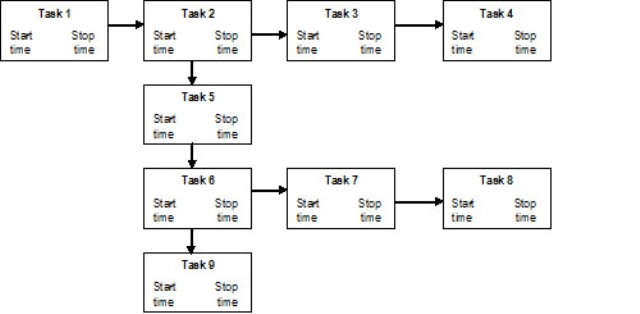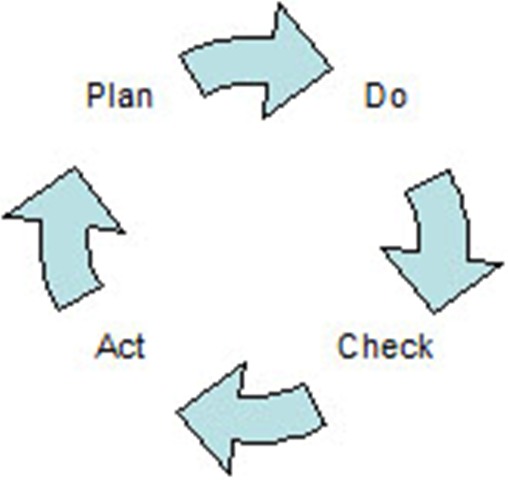

Project management is those principles, rules, and methods used to control project scheduling, costs, and outcomes. Good project management will result in quality projects delivered on time and within budget. When starting a project, there are some basic things you need to consider:
There are many project management resources available as well as software such as Microsoft Project to help managing projects. Charts help visually oversee projects.
One of the most common timeline charts is the Gantt chart. It is a bar graph that shows the duration of each task and how the tasks relate to each other.
Example:
 |
Computerized Gantt charts can also calculate costs and show individual schedules to eliminate overlapping projects on employees' schedules. Being able to track estimated timelines to actual time spent is incredibly valuable, especially for recurring projects.
A PERT (program evaluation and review technique) chart shows each task, its duration, and its relationship to the other tasks. The PERT chart is the best chart to see how tasks depend on each other and the order in which tasks must occur.
 |
The plan-do-check-act cycle is designed for implementing change. It was designed by W.A. Shewart in the 1930s and made popular by W. Edwards Deming in the 1950s. PDCA was created as a circle, which symbolizes that it has no end and the cycle should continue endlessly for improvement.
The four steps are:
 |
Next section: Handling Conflict
| Team Building Skills Home Page |
Velda Arnaud,
Ph.D.
Executive Director
Lead, Educate, Serve Society
leadeducateserve@gmail.com
Last updated 10/4/14 (va)
Copyright 2004-present